Catalog
Search
211 products
View:
- Selected: 1Areas of use
- Selected: 0Item names
- Selected: 0Manufacturer
- Selected: 0Made in
- Selected: 0Additional
View:
211 products
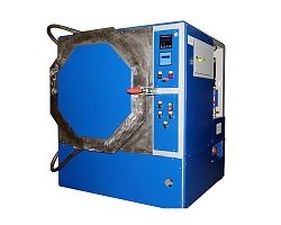
Chamber vacuum furnace SNVS-90/10-I2
High-temperature furnaces are capable of heating materials up to 1700 degrees. The scope of their application covers the heat treatment of various materials in an inert medium or vacuum. TULA-TERM furnaces are used for heat treatment of plastics, ceramics, metals, alloys, lacquers and other materials. The equipment allows sintering, annealing, soldering, quenching, drying, burning and molding. In industry, our installations are most often used for quenching parts and sintering hard alloys.
Tula-Term
Tula
Produced in: Tula

Small-sized multichannel spectrometer - "Hummingbird-2"
The spectrometer was created according to the Cherni-Turner scheme based on a flat diffraction grating and an MAES analyzer with one line of photodetectors. It has increased photometric accuracy due to cooling and temperature stabilization of the photodetector range, as well as due to its shell-less design, in which there is no re-reflection of radiation on the cover glass and the background level in the recorded spectrum decreases. The optical scheme and design of the spectrometer are optimized to obtain a high-quality spectrum with a low level of background radiation in any of the regions lying in the spectral range of 190-1100 nm. The choice of the working area is carried out by changing and rotating the diffraction gratings. The sealed case of the spectrometer is filled with an inert gas. The radiation is injected into the spectrometer using a quartz capacitor or a fiber-optic cable with an SMA-905 connector. The optical scheme and design of the spectrometer are protected by patents.
VMK OPTOELEKTRONIKA
Novosibirsk
Produced in: Novosibirsk
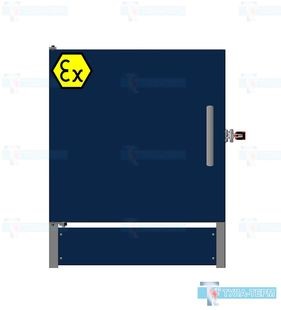
Explosion-proof vacuum electric furnace START-215
Vacuum resistance furnaces are necessary for heating products before pressure treatment, for sintering, degassing, quenching, annealing, soldering and chemical-technological processes. Such furnaces among all the variety of thermal equipment are considered the most environmentally friendly – heat treatment is carried out at t up to +2500 ° C in a purified vacuum. Under certain conditions, vacuum furnaces are used to work with neutral gases.
The outer part of the furnace is made of stainless steel and is cooled by liquid. The inner part of the working chamber, where the heat treatment of materials is carried out, is made of an alloy of molybdenum and tungsten. The components are characterized by a low inertia force, reduced gas separation. The settings are available on the control panel, where the instruments, automatic and manual control switches are located.
At every enterprise of the electronic industry, nuclear power, an explosion-proof vacuum resistance furnace is needed. The same applies to areas where various products undergo heat treatment at the stage of production and preparation for use
Tula-Term
Tula
Produced in: Tula
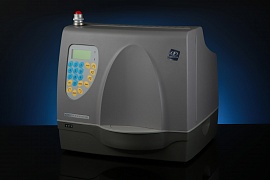
Spectrometer SPECTROSCAN MAX-G
The spectrometer is designed to determine the contents of elements in the range from Ca to U in substances in solid, powdery, dissolved states, as well as deposited on the surface or deposited on filters.
The principle of operation of the spectrometer is based on irradiation of the sample with primary radiation from an X-ray tube, measurement of the intensity of secondary fluorescent radiation from the sample at wavelengths corresponding to the elements being determined, and subsequent calculation of the mass fraction of these elements according to a pre-constructed calibration characteristic, which is the dependence of the content of the element being determined on the measured intensity.
Secondary fluorescent radiation is decomposed into a spectrum using a crystal analyzer. Due to this, the spectrometer has a high resolution, and therefore the ability to accurately analyze complex multicomponent substances.
NPO Spektron
Saint Petersburg
Produced in: Saint Petersburg
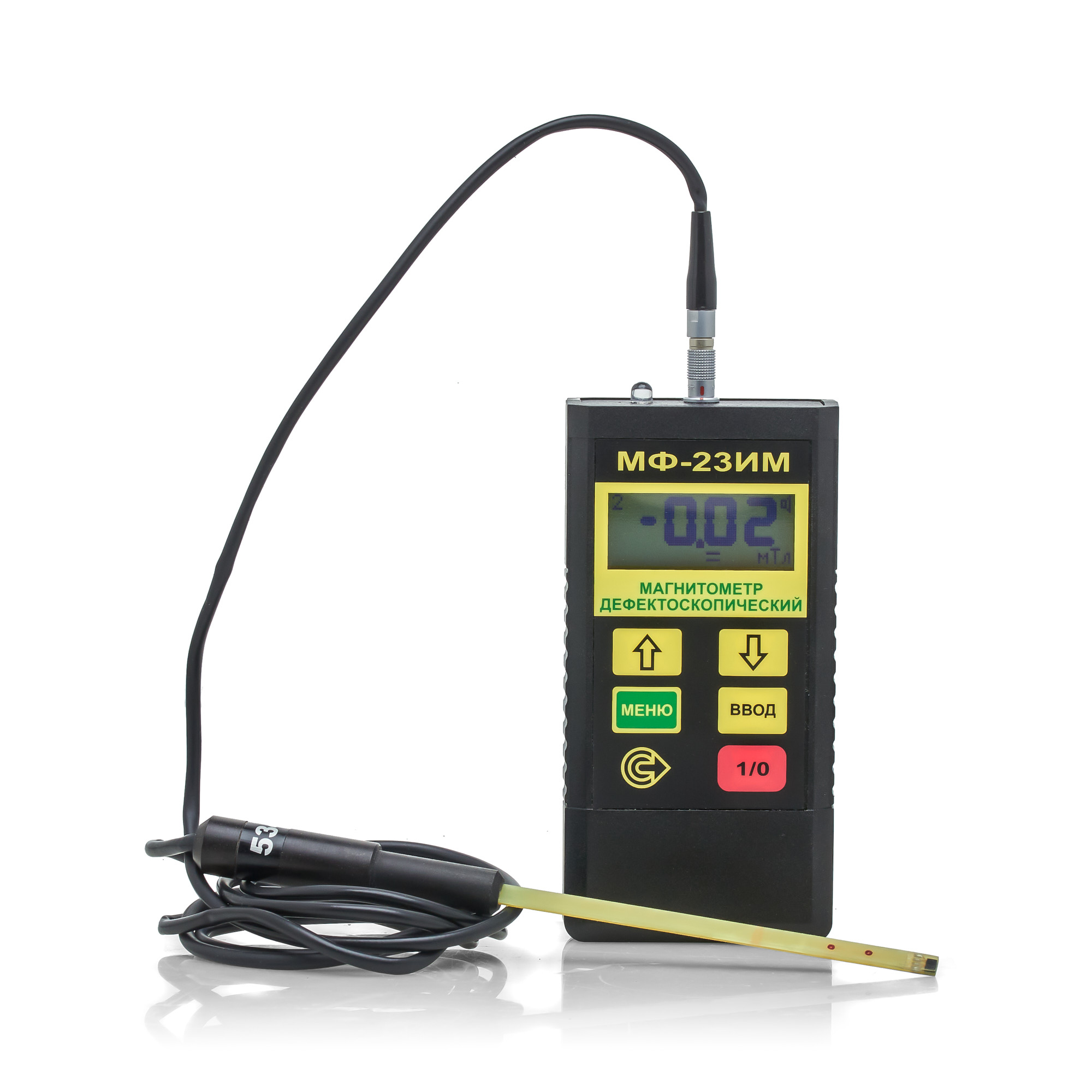
MF-23IM Flaw detection magnetometer
from
193 200 ₽
The MF-23IM flaw detection magnetometer allows you to determine the compliance of the ratio of the tangential and normal components of the magnetic field strength during magnetic particle testing using both the applied field method (AFM) and the remanent magnetization method (RMM) in accordance with the requirements of current regulatory documentation.
The MF-23IM flaw detection magnetometer meets the requirements in the field of non-destructive testing for the main industries: nuclear, energy, oil and gas complex, general and special engineering, railway transport, aerospace industry, elevator and crane facilities.
The flaw detection magnetometer is included in the State Register of Measuring Instruments (GRSI) under No. 20106-00. The magnetometer (milliteslameter) is also included in the register of measuring instruments, testing equipment and measurement methods used at JSC Russian Railways. The flaw detection magnetometer MF-23IM from the manufacturer is used to measure the parameters of constant, variable (industrial frequency) and pulsed magnetic fields when testing ferromagnetic products using the magnetic particle method, as well as to control the level of industrial interference. Specifications.
Magnetic field induction (strength) measurement range: - constant and variable (amplitude and average values) 0.5…1000 mT (4…8000 A/cm) - pulsed (amplitude value) 2…1000 mT (18…8000 A/cm) Indication of measurement results digital or digital + graphic Indicator liquid crystal display Power supply from 1 PP3 battery Current consumption, mA, no more than 15 Memory capacity for storing results 4080 Communication with a computer via infrared channel Dimensions of the electronic unit, mm, no more than 120x60x25 Weight of the electronic unit with battery, g 150
The minimum dimensions of the Hall transducer for the MF-23IM magnetometer make it possible to measure the induction and magnetic field strength in grooves, grooves, corner transitions, i.e. in those areas of the controlled product that are stress concentrators and the most dangerous from the point of view of crack formation; · Measurement of pulsed magnetizing field with pulse duration from 0.5 ms; · Small measurement error (see technical specifications table) · Compact size and low power consumption;
· The magnetometer has 2 modes for displaying measurement results – digital and graphic). The MF-23IM magnetometer in graphical display mode allows you to detect a demagnetizing pulse by displaying its shape and amplitude on a graphic display, as a result of which changes can be made to the magnetization circuit in a timely manner. · The software of the MF-23IM magnetometer allows you to flexibly configure not only the response thresholds, but also the time base, which allows you to tune out false indications caused by reverse emissions of the magnetic field or electromagnetic interference from operating power equipment (magnetizing devices or magnetic particle flaw detectors).
· Determination of the effective magnetization region, within which the tangential component of the magnetic field strength is sufficient for magnetic particle testing, and the ratio of the normal and tangential components of the magnetic field strength is less than or equal to 3. · Checking the mode of magnetization/demagnetization of test objects for compliance with the methodology/technological instructions for magnetic particle testing for a given object.
BASIC SET: Electronic unit Converter 1 Converter 2 Caliber PP3 battery CD with program Case Flaw detection magnetometer MF-23IM. Passport
The flaw detection magnetometer is included in the State Register of Measuring Instruments (GRSI) under No. 20106-00. The magnetometer (milliteslameter) is also included in the register of measuring instruments, testing equipment and measurement methods used at JSC Russian Railways. The flaw detection magnetometer MF-23IM from the manufacturer is used to measure the parameters of constant, variable (industrial frequency) and pulsed magnetic fields when testing ferromagnetic products using the magnetic particle method, as well as to control the level of industrial interference. Specifications.
Magnetic field induction (strength) measurement range: - constant and variable (amplitude and average values) 0.5…1000 mT (4…8000 A/cm) - pulsed (amplitude value) 2…1000 mT (18…8000 A/cm) Indication of measurement results digital or digital + graphic Indicator liquid crystal display Power supply from 1 PP3 battery Current consumption, mA, no more than 15 Memory capacity for storing results 4080 Communication with a computer via infrared channel Dimensions of the electronic unit, mm, no more than 120x60x25 Weight of the electronic unit with battery, g 150
The minimum dimensions of the Hall transducer for the MF-23IM magnetometer make it possible to measure the induction and magnetic field strength in grooves, grooves, corner transitions, i.e. in those areas of the controlled product that are stress concentrators and the most dangerous from the point of view of crack formation; · Measurement of pulsed magnetizing field with pulse duration from 0.5 ms; · Small measurement error (see technical specifications table) · Compact size and low power consumption;
· The magnetometer has 2 modes for displaying measurement results – digital and graphic). The MF-23IM magnetometer in graphical display mode allows you to detect a demagnetizing pulse by displaying its shape and amplitude on a graphic display, as a result of which changes can be made to the magnetization circuit in a timely manner. · The software of the MF-23IM magnetometer allows you to flexibly configure not only the response thresholds, but also the time base, which allows you to tune out false indications caused by reverse emissions of the magnetic field or electromagnetic interference from operating power equipment (magnetizing devices or magnetic particle flaw detectors).
· Determination of the effective magnetization region, within which the tangential component of the magnetic field strength is sufficient for magnetic particle testing, and the ratio of the normal and tangential components of the magnetic field strength is less than or equal to 3. · Checking the mode of magnetization/demagnetization of test objects for compliance with the methodology/technological instructions for magnetic particle testing for a given object.
BASIC SET: Electronic unit Converter 1 Converter 2 Caliber PP3 battery CD with program Case Flaw detection magnetometer MF-23IM. Passport
RII MNPO SPEKTR
Moscow
Produced in: Moscow
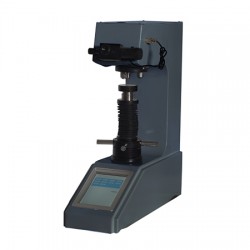
Metolab 502 Vickers Hardness Tester
The stationary METOLAB 502 hardness tester is a modification of the METOLAB 501 series device, equipped with a display and a digital micrometer that allows you to automatically read values without the need for conversion tables. The device also automatically calculates the hardness of the samples.
The METOLAB 502 microhardometer is designed to measure the hardness of various samples and products (steels, cast iron, non-ferrous metals and soft alloys) according to the Vickers (HV) and Knup (HK) scales in full compliance with GOST R ISO 6507-1-2007. The device has high accuracy, performs measurements in a wide range and with high repeatability.
The stationary automatic METOLAB 502 hardness tester is included in the State Register of Measuring Instruments of the Russian Federation (GRSI) under the number 66668-17 and comes with a certificate of primary verification (on request).
Distinctive features of the stationary METOLAB 502 Micro-Vickers hardness tester:
Built-in digital micrometer that allows you to automatically read readings without the need for translation tables;
Automatic hardness calculation;
Simple and intuitive control of the device, fully Russified menu;
Wide range of measured values – from 5 to 2500 HV;
A wide range of applied test loads - 0.09807 N (10 g), 0.2452 N (25 g), 0.4903 N (50 g), 0.9807 N (100 g), 1.961 N (200 g), 2.942 N (300 g), 4.904 N (500 g), 9.80 N (1 kg);
Large and bright LCD display.
Basic delivery package:
Stationary METOLAB 502 Micro-Vickers Hardness Tester;
Standard hardness sample – 2 pcs.;
Flat desktop;
Large flat desktop;
V-shaped desktop;
Micrometer;
Diamond indenter with an angle of 136°;
User Manual.
Metolab
Moscow
Produced in: Moscow
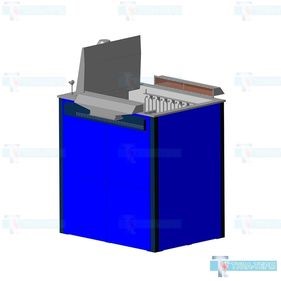
Quenching water tank BZV – 10.12.15/0.8
Heating chamber power, kW
40
Supply voltage, V
380 ±15%
Frequency, Hz
50
Number of phases
3
Maximum operating temperature, oS
80
The range of automatic temperature control, oS
From 20 to 80
Stability of automatic temperature maintenance, oS
±6
Environment in the workspace
Water, oil, polymer liquid.
Warm-up time to maximum temperature, h
1,5
Heating control
Digital controller
Workspace dimensions:
width,mm
1000
depth, mm
1200
height, mm
1500
Overall dimensions of the product:
width (without control cabinet), mm
1800
depth, mm
2100
height, mm
2750
Weight, kg
700
Working hours, hours per day/days per week
24/5
Tula-Term
Tula
Produced in: Tula

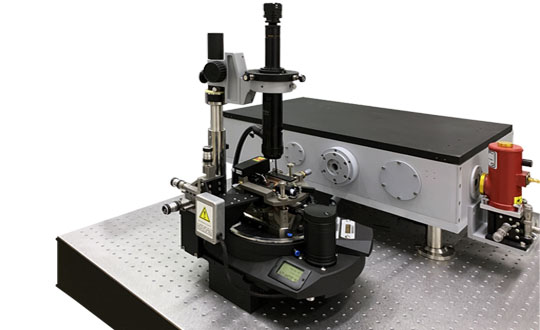
NTEGRA NANO IR
NT-MDT Spectrum Instruments is an INTEGRA Nano IR–scattering scanning near‑field optical microscope (s-NSOM) designed for the infrared spectral range.
The AFM probe is located in the focus of an optical system that directs the IR laser radiation to the sample and collects the optical response. The collected radiation is sent to the Michelson interferometer for optical analysis.
The far-field component of the collected signal is suppressed by synchronous detection. The INTEGRA Nano IR system allows detecting the amplitude and phase of the near-field signal. The spatial resolution of the resulting reflection and absorption contrasts is approximately 10 nm and is determined only by the size of the tip of the probe.
NT-MDT Spectrum Instruments
Zelenograd
Produced in: Moscow, Zelenograd
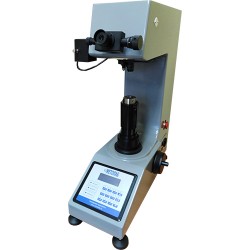
Metolab 451 Vickers Hardness Tester
METOLAB 451 is a stationary hardness tester for measuring various materials using the Vickers method (HV scale) in full compliance with GOST R ISO 6507-1-2007. Due to its characteristics, the device allows you to measure the hardness of steels, cast iron, non-ferrous metals, soft alloys and other similar materials. The hardness tester is equipped with an electronic load value switch, has the functionality of entering diagonal length values from the control panel with subsequent automatic calculation of hardness. It is also possible to note a wide range of measured values (from 5 to 2500 HV) and the range of the applied load (from 1 to 50 kg).
The automatic METOLAB 451 Vickers hardness tester is included in the State Register of Measuring Instruments of the Russian Federation (GRSI) and comes with a certificate of primary verification (on request). The entry number in the GRSI is 67656-17.
Distinctive features of the stationary METOLAB 451 Vickers hardness tester:
Simple and intuitive control of the device;
Simplicity and ease of maintenance of the hardness tester;
Wide range of measured values – from 5 to 2500 HV;
Automatic application of test loads in the range: 1 kg (9.8 N); 2 kg (19.61 N); 3 kg (29.4 N), 5 kg (49 N), 10 kg (98 N); 20 kg (196.1 N); 30 kg (294 N), 50 kg (490 N);
The price of dividing the scale of the reference microscope: 0.5 microns at 200x, 1 microns at 100x;
The hardness tester is equipped with an electronic load value switch;
A bright and clear LCD display that displays all the necessary service information, including the selected scale, the set load, exposure time, test mode, etc.;
An automatic loading system guarantees high accuracy and repeatability of the results.
Basic delivery package:
Stationary METOLAB 451 hardness tester;
Standard Vickers hardness test - 2 pcs.;
Flat desktop;
V-shaped desktop;
Micrometer;
Diamond indenter with an angle at the top of 136°;
User Manual.
Metolab
Moscow
Produced in: Moscow

Vacuum compression furnace SNVS-4,5.5,5/3-I2PD
Vacuum compression furnace SNVS-4,5.5,5/3-I2PD is designed for drying, degassing in vacuum and under pressure at temperatures up to 300 0C.
Tula-Term
Tula
Produced in: Tula
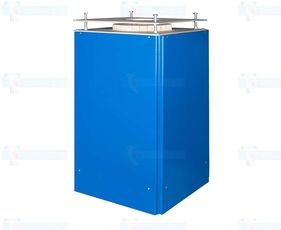
Muffle shaft furnace with digital control SSHOL-70/11
from
599 430 ₽
The muffle shaft furnace with digital control SSHOL-70/11 (hereinafter referred to as the "furnace") is designed for firing products, melting and heat treatment of metals. It can be used as a universal laboratory muffle furnace in metallurgical, ceramic, jewelry production, dental, chemical and food laboratories.
Tula-Term
Tula
Produced in: Tula
